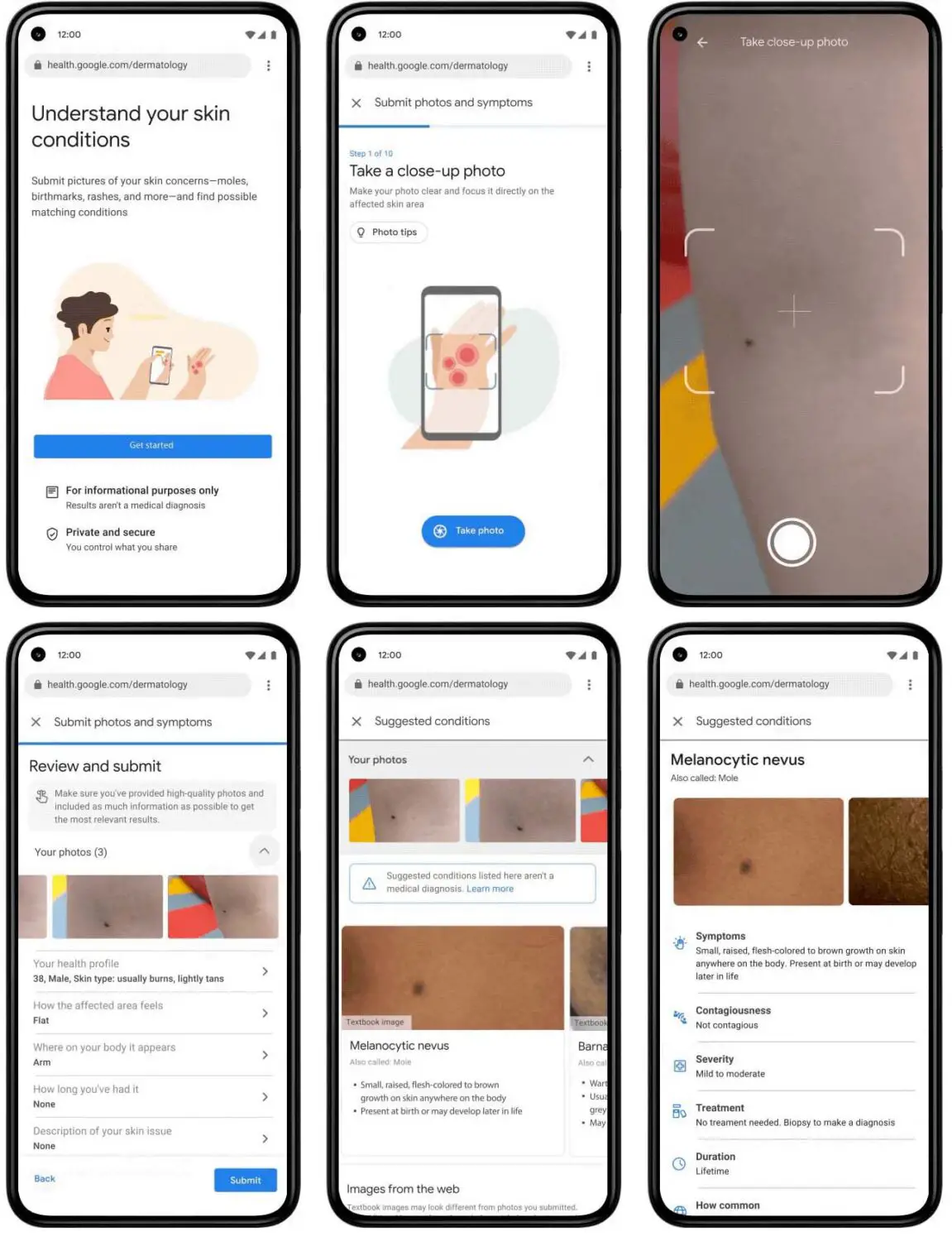Google has developed a new tool that uses AI to help people identify common skin conditions.
Every year, people reach out to Google Search almost 10 billion times to ask questions about skin, nails, and hair. While the information is there, it remains difficult for many to precisely describe the visible symptoms with words alone.
Related | Google Is Bringing A More Detailed And Personalized Live View To Maps
Statistics show that over two billion people across the globe are affected by dermatological issues, and there is a global shortage of specialists. That’s why Google developed the AI-powered dermatology assist tool – a web-based application that works with the camera on your phone.
From facilitating the breast cancer screening process to detecting tuberculosis more efficiently, AI is starting to really contribute to medical advances. Even more so, if all you need is a mobile phone camera to stop wondering about that strange dry patch or growth on your skin.
Google announced the new dermatology assist tool at its I/O developers’ conference last week, but it still hasn’t been approved by the FDA in the US. As a result, Google hopes to launch the app as a pilot later this year.
In Europe, the tool – which uses many techniques previously developed to detect diabetic eye disease or lung cancer in CT scans – will be CE marked as a Class I medical device.
The way it works is simple. Users take three images of the skin, hair, or nails from different angles. They’ll then be asked questions about their skin type, how long they’ve had the issue, and a few other questions related to symptoms. The AI model then analyzes information entered, runs it through its knowledge base of 288 conditions, and provides a list of possible matching conditions.

Google sources the information about each condition matched from dermatologist-reviewed content and will point users to commonly asked questions – and even matching images from the web.
The company says the tool is not intended to offer a proper diagnosis or substitute medical advice. Many conditions, in fact, require review by a professional, an in-person examination, or additional testing, like a biopsy.
However, the purpose of the technology is to facilitate detection, filter out non-authoritative answers, and help people make a more informed decision about the next steps.
A recent Google study claims that “AI systems can achieve accuracy that is on par with U.S. board-certified dermatologists.” The model also takes into account factors like age, sex, race, and skin types.
Reactions from the global medical community have raised questions about how this technology will affect the ability of patients to still responsibly reach out to doctors – instead of simply relying on the limited web-based application. These are, of course, very valid concerns.
If you’re interested in this tool, sign up here to be notified (subject to availability in your region).
